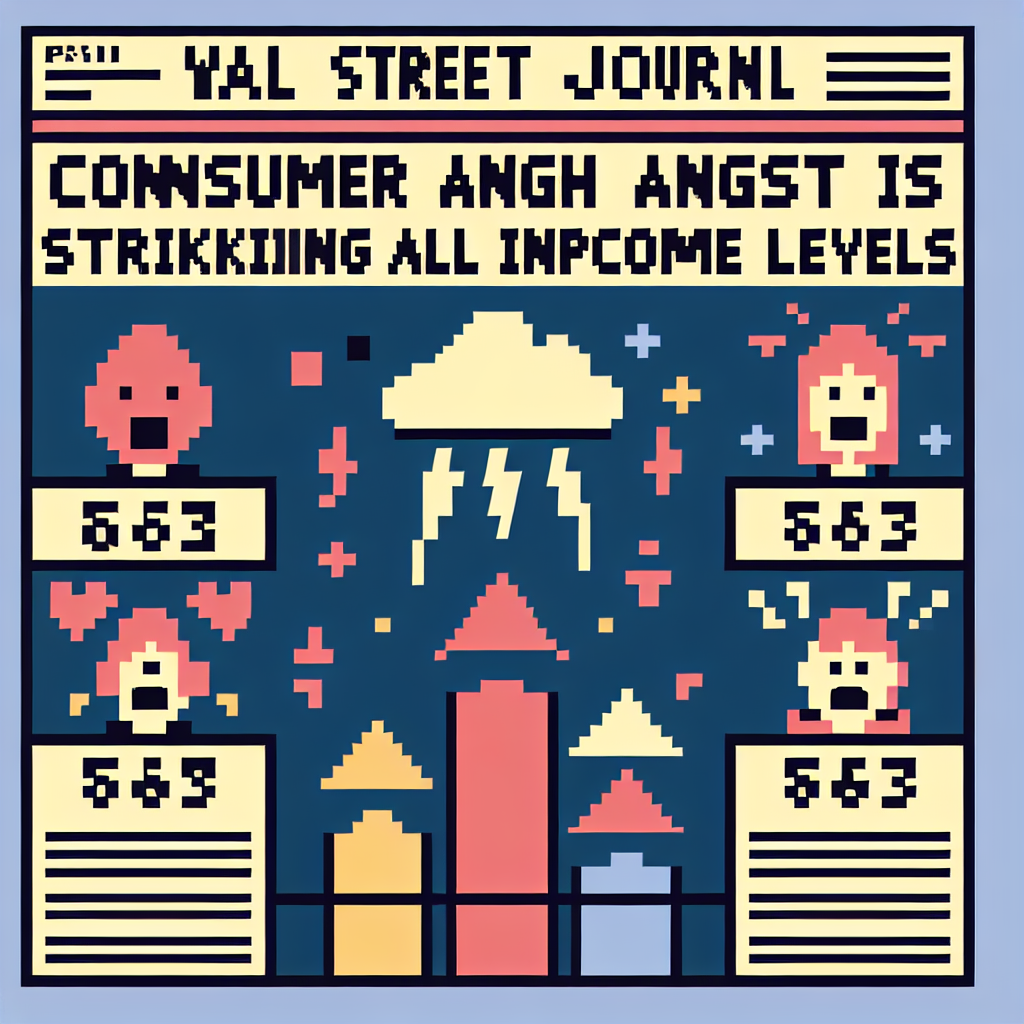Consumer Angst Is Striking All Income Levels - The Wall Street Journal | Analysis by Brian Moineau
Consumer Angst: When Even Retail Therapy Can't Save the Day
In a world where retail therapy is often the go-to stress reliever, something unsettling is brewing across all income levels. The Wall Street Journal recently highlighted a growing sense of consumer angst that's impacting spending habits on everything from the essentials to the extravagant. It seems that no one is immune to the financial jitters, not even those who might traditionally be thought of as financially secure.
The Great Equalizer: Economic Uncertainty
What’s intriguing about this trend is its cross-demographic reach. Historically, economic downturns tend to hit lower-income households the hardest. But this time, the unease is palpable across the board. Whether it’s cutting back on avocado toast or postponing the purchase of a new Tesla, everyone is feeling the pinch. The phrase "keeping up with the Joneses" might be morphing into "keeping up with the savings account."
This isn't merely a domestic issue. Across the pond, the UK is experiencing similar trends. According to a report by The Guardian, British consumers are also tightening their belts, reflecting a broader, global sentiment of caution. The reasons are manifold - looming recession fears, fluctuating stock markets, and unpredictable global events like the war in Ukraine are all contributing to this widespread consumer anxiety.
The Ripple Effect: Beyond the Wallet
The impact of this spending slowdown is not just financial. It’s reshaping industries and altering business strategies. Retailers are having to rethink inventory and marketing approaches. Even luxury brands, once thought to be recession-proof, are seeing shifts in consumer behavior. It's a fascinating, albeit challenging, time for businesses as they navigate these uncertain waters.
Moreover, the angst isn't just about money. It’s about security, stability, and the future. The pandemic taught us all that nothing is guaranteed, and now, with inflation and geopolitical tensions, many are revisiting this lesson.
A Light at the End of the Tunnel?
So, where does that leave us? Is there a silver lining to this cloud of consumer caution? Perhaps. Financial experts often suggest that periods of reduced spending can lead to increased savings, which in turn can foster long-term economic stability. A Financial Times article suggests that this could be a time for households to bolster their financial literacy and prepare for future uncertainties.
Additionally, this period of introspection might lead to more sustainable consumption patterns. As people become more mindful of their purchases, there could be a positive shift towards quality over quantity, benefiting the environment and society in the long run.
Final Thoughts
In times of uncertainty, it's easy to focus on the negatives. But there's something to be said for the resilience and adaptability of consumers worldwide. As we navigate these choppy economic waters, perhaps the key is to find balance—between spending and saving, between wants and needs.
Ultimately, consumer angst, while unsettling, could serve as a catalyst for smarter financial decisions and a more sustainable future. After all, every challenge presents an opportunity for growth and change. So, let's embrace this moment of reflection and use it as a stepping stone to a more secure and conscientious tomorrow.
For more insights on the topic, you can read the original Wall Street Journal article [here](https://www.wsj.com/).
Read more about AI in Business

